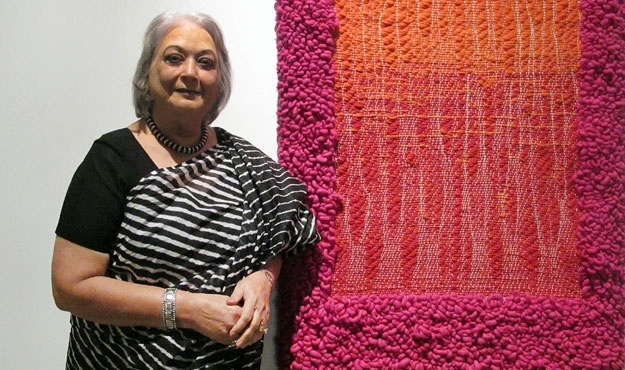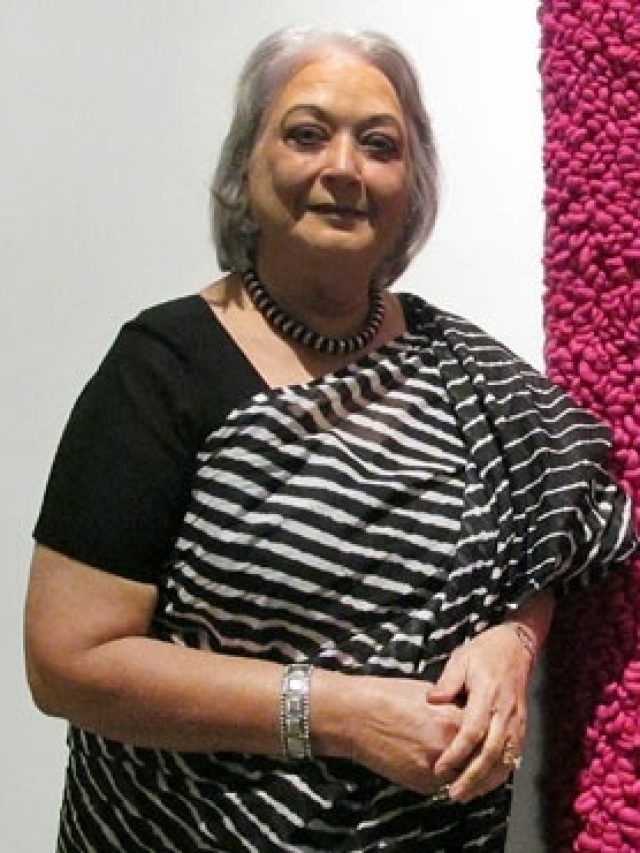Talk about a glorious purpose! The Marvel fans are ecstatic about their favorite (and relatable) anti-hero Loki Laufeyson finally finding his purpose. What happens in fantasy stays in the fantasy world. In the real world, it is extremely rare for someone to acknowledge and hand themselves over to their glorious purpose. But if you are Monika Correa, it seems that the purpose finds you.
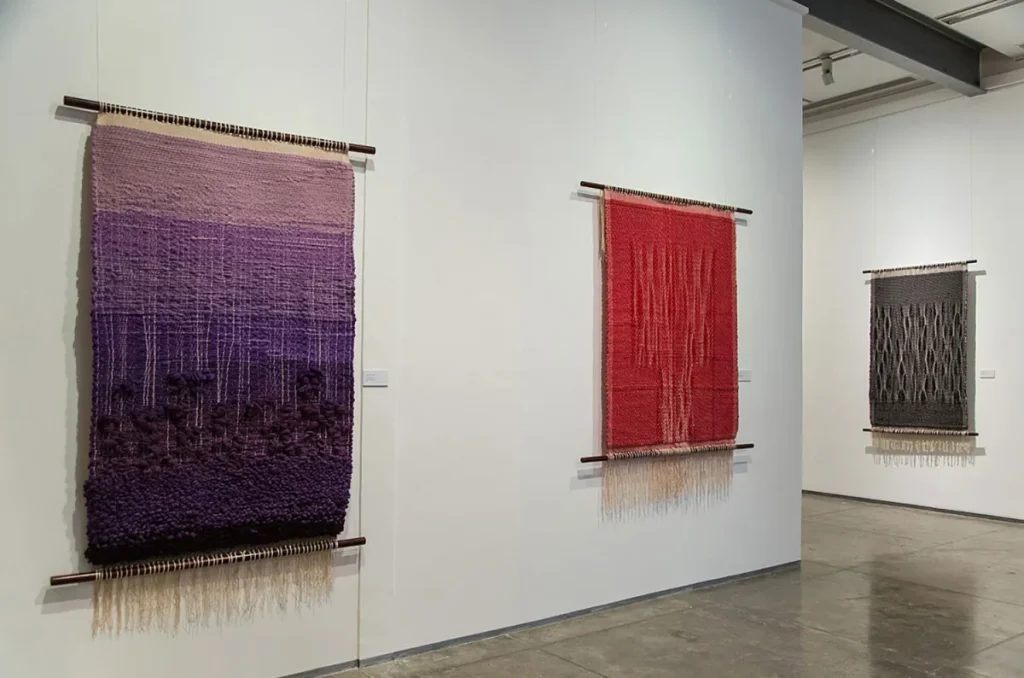
Despite being the progenitor of experimental weaves, she gained recognition much later in her life. But once the positive critiques came in, they never stopped pouring in. Monika Correa’s work has been placed in the Met, the Museum of Modern Art (MOMA), and Tate Modern, to name a few. This has gained her a seat of influence among the international parliament of weavers.
Monika Correa’s Journey
Monika Correa was destined to be a weaver, even though she had been studying microbiology at St. Xavier’s College, Mumbai. Although it might’ve taken her time to understand that her affinity towards ryijy carpets and rya rugs wasn’t just a love of colours and patterns, but an endearment of the technique herself, we are glad she did. An enthralled Monika owes her basic weaving and loom knowledge to Marianne Strengell, whom she met in America.
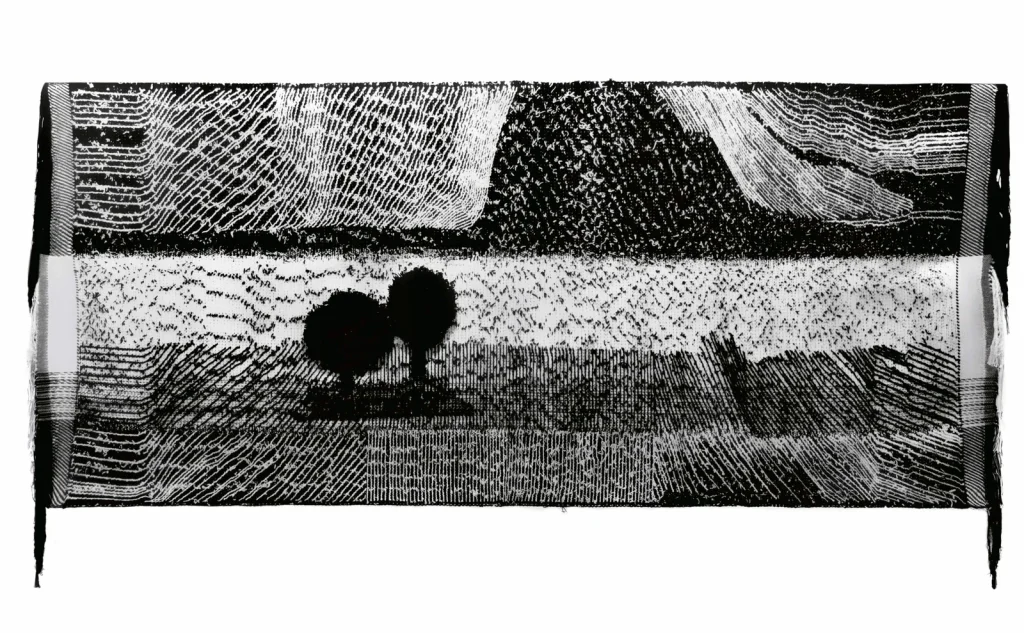
Before returning, Strengell passed on the secret of her one-of-a-kind loom to Monika. As soon as she set foot in India, she got to work, along with a disciple of Nelly Sethna, another of Strengell’s students. Monika Correa soon entered the Weavers’ Service Centre (WSC) where she met KG Subramanyan, who incorporated fabric into his sculptures. Her experiences at WSC groomed her to notice the technicalities involved in the making of various weaving styles.
Monika Correa’s Experimental Phase
Once she mastered the peculiarities of the loom, she devoted herself full-time to tapestry weaving. Her earlier work is quite similar to her contemporaries, bold figurines engendered by stitching multi-coloured patches together. During this time, Monika Correa tried to enjoy the immense possibilities of the loom’s structural poignance. She did so by doing away with the fixed reed – which secured the two sets of yarn and created the base for inserting another weft. A detachable weave meant that she could now displace her wefts within the tapestry. This not only left a sculptural mark on her oeuvre but also granted a fluidity one could’ve never imagined.
Original Sin (1972)
Pilloo Pochkhanawala asked Monika Correa to create weaves for the 1966 Bombay Arts Festival. For this purpose, she created two enigmas, one being ‘Original Sin’, which debuted in 1972. The tapestry is made from dyed cotton and wool. It features heavy use of brown and red shades. At the top part, a circle woven in vermillion, with traces of hot pink and deep pink can be found. It is surrounded by various hues of brown, each differing in intensity.
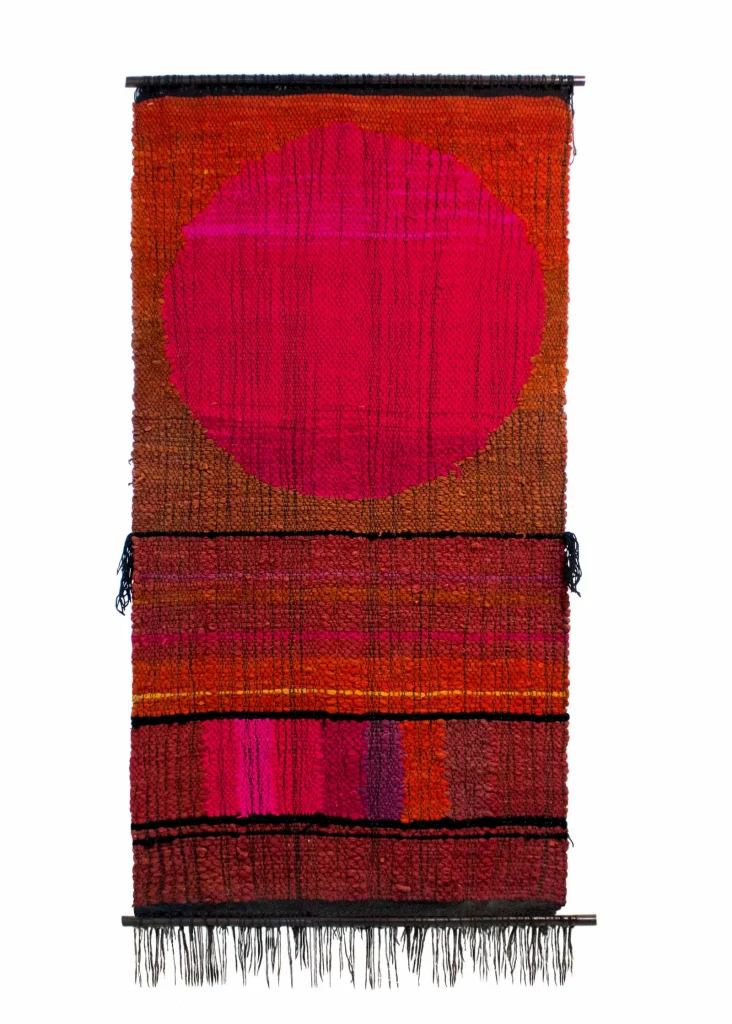
The tapestry is divided into four sections by a black weave. The second section is a horizontal amalgamation of weaves, each seeping into the other. The third section depicts a symphony of various vertical stripes. Monika Correa uses hand-spun wool, an element indigenous to Panipat, Haryana.
Mecca (1968)
Mecca refers to the Islamic holy city, a centre of pilgrimage. With her piece, Monika Correa tries to instil spirituality into her audiences. Although it is quite minimalist, with three concentric rectangular boxes, the beauty lies in the texture and colour. It is made from thick handspun wool. The geometry, sparingly featured in her piece, is inspired by her late husband, architect Charles Correa. The religious notion is a testament to her Christian faith and the intermingling of religions.
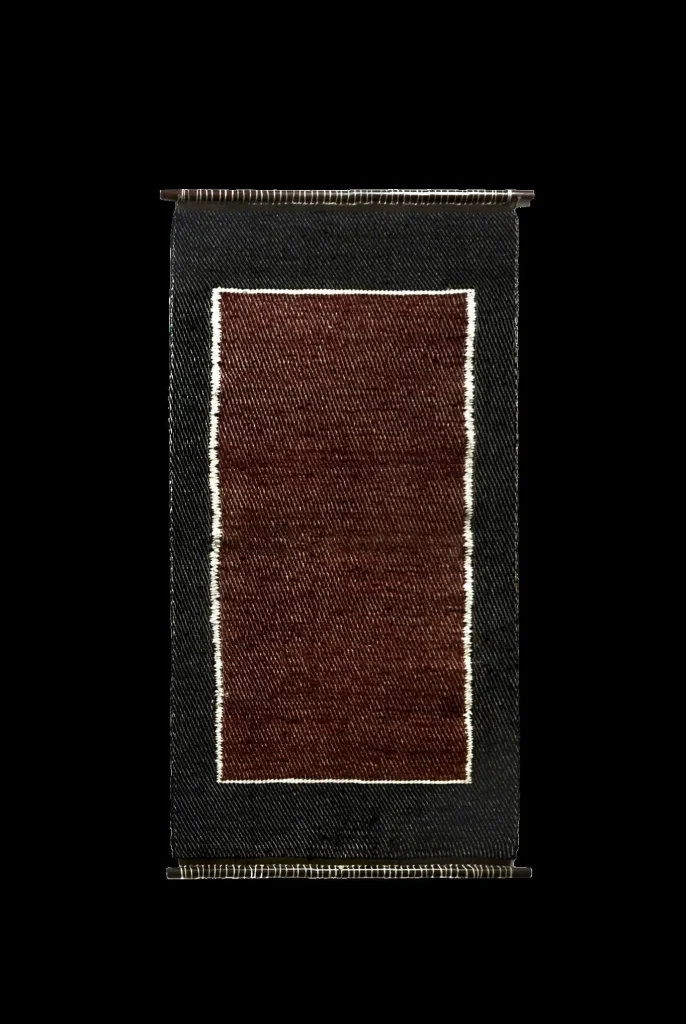
Photo Courtesy – Pinterest
Priya Ravish Mehra: Healing Existential Dread One Thread at a Time

